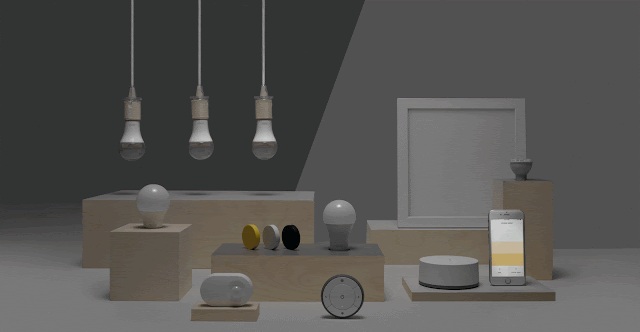Ikea can be criticized for using cheap materials and veneers, but you have to admire its commitment to tasteful furniture design that has raised the baseline aesthetic of the average dorm and living room. In this way it’s helped to democratize design, bringing a sense of bespoke furnishings to people who might otherwise not have been able to afford them. Now the company is on the verge of using its global reach and manufacturing might to do it again — only this time it's poised to make smart home technology as commonplace as the LED light bulb.
Do you remember a world before Ikea? Let me assure you, it was miserable. Furniture was made from expensive solid wood that was sturdy enough to provide shelter from a Soviet invasion. Fine for the Cold War, I guess, but less than ideal for this modern nomadic culture that’s more environmentally aware. True, some of it was beautiful and fantastically designed, but most was not. And on the off chance that it could be disassembled, it was impossibly bulky to transport and the assembly instructions contained many words and few, if any, illustrations. In its current state, smart home tech is just as miserable, divergent, and expensive.
Ikea's first home automation solution (coming to the US “this spring”) is as inexpensive as you’d expect, and focused on the biggest bang-for-the-buck in smart homes today: lighting. When Hue launched, it relied exclusively on smartphone apps, until Philips finally started shipping wall-mountable switches and dimmers that could be used by the entire family, friends, and even Airbnb guests. Ikea's new TRÅDFRI (translation: “wire-free”) smart kit includes a wall-mountable and battery-powered dimmer switch, two white-spectrum bulbs, and a small hub that allows you to create device groupings that work together intelligently. (Yes, there are free TRÅDFRI apps for iOS and Android, too.) Best of all, the kit only costs $79.99 which is a full $50 cheaper than the very popular, and similarly specced Hue starter kit that retails for $129.99.
Breaking things down into unit prices reveals how much of a cost advantage Ikea's range of smart devices will have in the US. Ikea's wall-mountable dimmer switch costs $12.99 (Hue's costs $24.99). The cheapest Ikea smart LED bulb costs $11.99 (Hue's costs $14.99) yet both are dimmable, equally bright, and offer a range of white lighting temperatures to choose from. Ikea also offers a motion sensor that can be grouped with bulbs to trigger lighting in places like hallways, a closet, or an entry, for example. In the US it's only offered in an Ikea kit at the moment, which also includes a smart LED bulb for $24.99. Hue's motion sensor costs $39.99 and doesn't include an extra bulb. Ikea easily beats Hue across the board on price while offering the same base-level functionalities.
Of course, Hue offers more sophisticated control and a far wider selection of standalone lights (including multi-colored ones) given its multi-year head start. But this is Ikea, so it can easily incorporate smart lights into the furniture you're already buying, increasingly the likelihood that you'll adopt the Ikea smart home ecosystem. Especially when “good enough” is usually just the right amount of smart home technology for most people. Ikea already sells compatible lighting panels that double as doors on Ikea's popular lineup of storage and kitchen cabinets in some countries (coming to the US this summer), and the effect is pretty damn cool, in my opinion.
Ikea sells a lot of lights and has a knack for nudging the industry in the direction it wants to go thanks to the nearly 1 billion store visits it receives each year. In 2011 Ikea stopped selling incandescent bulbs and in 2012, Ikea announced that it would phase out everything but LED light bulbs by 2016. It accomplished that goal in 2015, announcing at the time that it had sold 7.6 million LED bulbs since 2013 just to US customers.
So, imagine what could happen to the worldwide ubiquity of smart home technologies if lighting is just the tip of Ikea’s ambition. Ikea sells a lot of window coverings, for example, that would benefit from smart controllers that could be integrated with a home's thermostat, which the TRÅDFRI app would turn off after double-bolting your smart lock when you've left the house. That’s just a taste of where Ikea could take things either alone or through partnerships.
With TRÅDFRI, the world's leading home furnishings retailer is now taking the smart home seriously — how serious, is the question I'll bet companies like Apple (HomeKit), Samsung (SmartThings), Google (Nest), Amazon (Alexa), and many others are asking right at this very moment.

Comments
Post a Comment